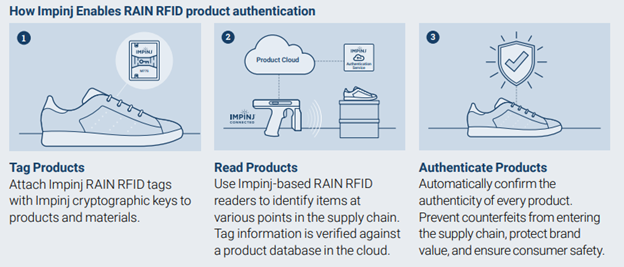The How and Why of RAIN RFID Cryptographic Authentication
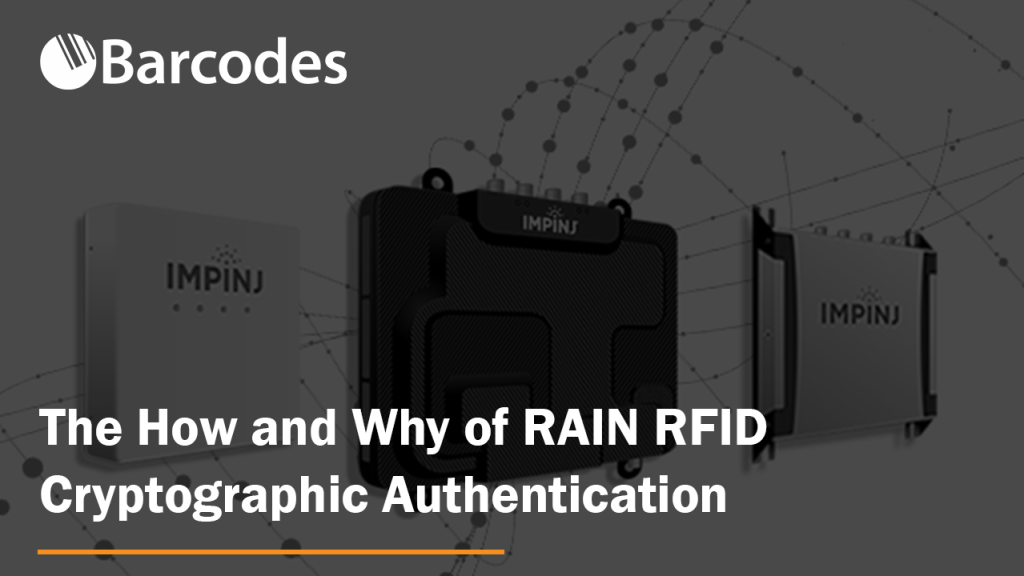
The problem of counterfeit products is global, and it’s growing. Knockoff handbags, athletic shoes, wristwatches, and pharmaceuticals cost businesses and consumers billions of dollars every year globally.
Now, there’s a new way brands can fight fakes: RAIN RFID cryptographic authentication.
The Impinj Authenticityâ„¢ solution engine brings enterprise-scale product authentication to new and existing RAIN RFID deployments.
What is Product Authentication?
At its heart, authenticating something is largely straightforward: You want to conclusively establish the item as genuine and determine its owner or origin. Doing that can get complex.
Product authentication solutions built on the Impinj platform employ secure cryptography, using a challenge-response protocol to determine with a high degree of certainty whether an item is genuine.
RAIN RFID from Impinj
An item tagged with RAIN RFID has certain information associated with it—data such as the manufacturer name, model number, serial number, date of manufacture, purchase date, customer name, and more. That item-specific data can be stored in a product cloud.
When that item is read at any point in the supply chain by a RAIN RFID reader, an Impinj-based authentication solution cross-checks and confirms the information stored in the product cloud and verifies the tag’s authenticity using the Impinj Authentication Service.
Impinj Authenticity uses cryptographic authentication, a feature of the new RFID tag chips, to swiftly and automatically verify tagged products as genuine.
Implement RAIN RFID with a Trusted Partner
For an in-depth explanation of how Impinj Authenticity works, contact Barcodes, Inc. to learn more about RAIN RFID.
Reliable Zebra Device Procurement from the Experts at Barcodes, Inc.
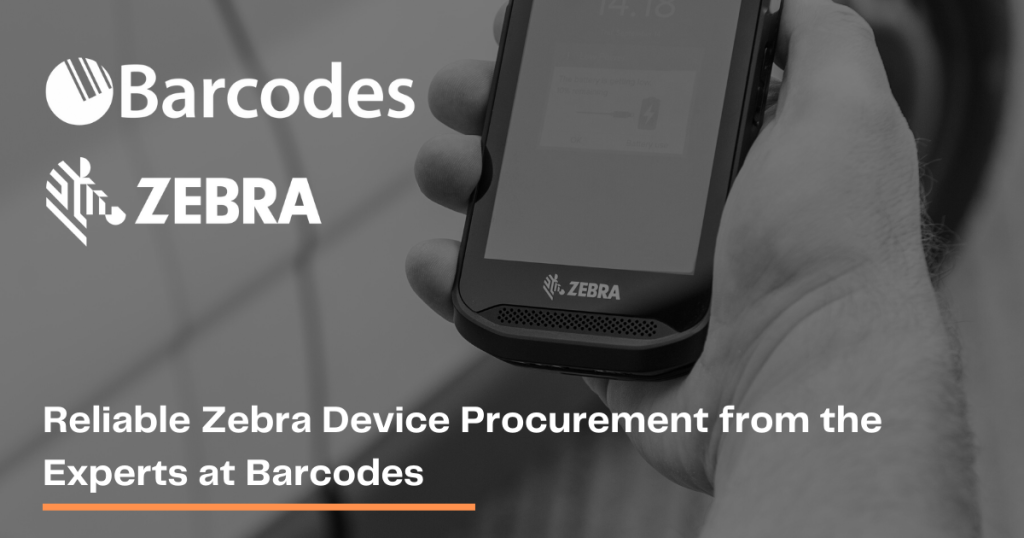
Your warehouse devices are one of the foundations of your operation so it’s crucial that you are using the best equipment for your company. Finding the right choices for your enterprise’s unique needs can be challenging because, without a doubt, device procurement takes significant time and research. If you get it wrong, it could mean disaster for your daily operations. Let’s make sure you make the right choices so management will see your operations running smoothly and efficiently.
Proven Process for Device Procurement
Barcodes has a proven approach to device procurement. The experts at Barcodes take the time to understand your company’s unique needs, identify suitable Zebra devices, and efficiently navigate complex supply chain challenges to deliver a world-class product and experience.
Barcodes will get input from different members of your team so they gather in-depth knowledge of your current devices and then work with you to identify the best enterprise mobility solution to meet your needs. Our team of experts leverages our knowledge of the industry, technology trends, and market landscape to ensure we provide your company with the best solutions.
At Barcodes, we believe that procuring the right Zebra devices for your enterprise is critical. We understand that finding the right solution takes time and careful consideration so we take the time to get to know your business, and its unique needs before recommending any solutions.
The Right Zebra Devices at Your Fingertips
Barcodes is proud to be an authorized Zebra reseller. What does that mean for you? First, Barcodes has exclusive access to the latest Zebra technologies, giving you a head start on the newest devices and groundbreaking solutions. Additionally, Barcodes can fill your order with genuine Zebra devices backed by a Zebra warranty, so you can be confident knowing your devices are protected. Plus, you’ll enjoy the world-class technical support that only Zebra + Barcodes can provide.
Leave Device Procurement to the Experts – Get Started Today!
You don’t need to lose sleep over Zebra device procurement. Learn more about how our true Mobility Management service with Zebra device procurement can make a difference for your business. Get started today by contacting a Barcodes Mobility Expert online or calling us at (855) 233-2917.
Common Profitable Self-Serve Kiosk Applications from Touch Dynamic
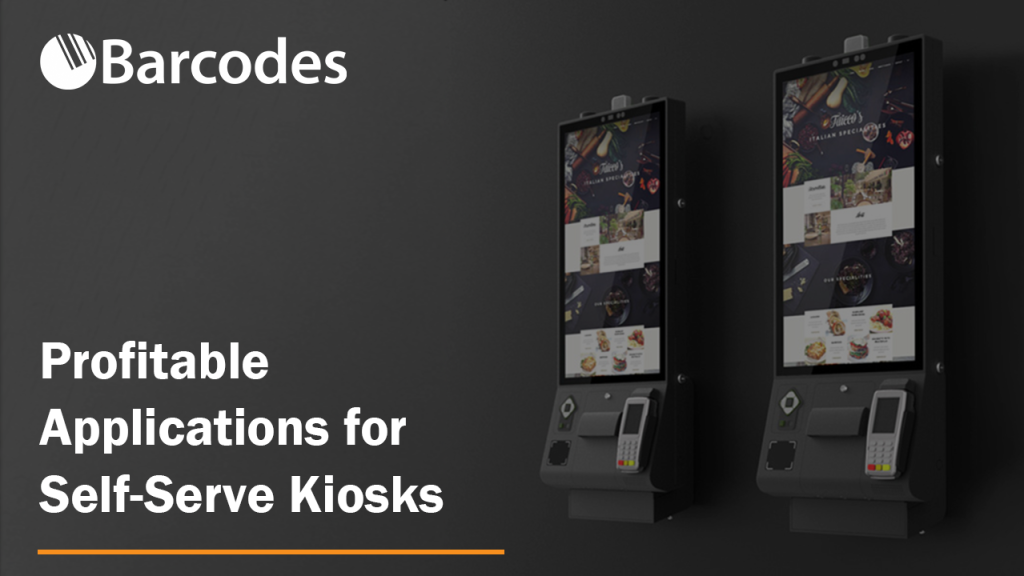
Both customers and business owners have become more and more interested in self-service kiosks. Reduced wait times and increased user control are two factors in favor of kiosks. Touch Dynamic Pavilion Kiosks are a shining example of self-serve kiosks done well.
Kiosks are flexible machines that can be used in many different ways. They can be used to check out at restaurants and stores, as well as to check in at airports, hotels, and doctors’ offices.
Every business has different needs, but they can all benefit from adding wall-mounted kiosks to their tech offerings.
Quick Service Restaurant Kiosk Use
A booth wall mount is good for restaurants because it can bring in more customers and help them spend more money. Kiosk users place more orders, which raises the average amount they spend by 12–20% or even 30%.
One reason is that the booth is always offering deals, bundles, and extras. Others point out the visuals are easy to navigate and allow customers to visually confirm their order details without being rushed.
Kiosk meals can show more information about the food and how it affects your diet than options on paper or boards. Customers with special dietary needs can check ingredients with ease.
Another reason for a wall kiosk: orders go straight from the customer to the cook. This improves order accuracy and order queue speeds. And the kitchen knows exactly where the items are going for handoff to customer.
Touchscreen Kiosks for In-Store
Kiosks display pricing information, product details, in-store location, and even availability at nearby stores. This frees up valuable associate resources to deliver an exceptional, personalized experience.
Like restaurants, stores can have self-service checkouts with booth wall mounts. Customers can avoid waiting in long lines, and they have more control over how they shop.
Self-checkout is more handy and easy to use, so customers who don’t want to wait in long lines are less likely to leave their carts behind.
Wall-mounted screens can also be a great way to save space in small rooms. Since they are fixed on the wall, all you have to do is give customers a place to put their purchases.
No need to worry about giving the units more floor or counter room. Instead of putting checkout equipment on the bar, the wall mount makes room for things like displays of seasonal goods and “impulse buys,” which bring in more money.
Family Fun and Attractions Need Kiosks, Too
Bowling alleys, skating rinks, amusement parks, and indoor fun centers install wall-mount kiosks:
- Faster check-in and ticketing processes
- Fewer long lines
- Improved workflow for employees
Places to eat, gift shops, photo booths, and equipment/gear rental benefit from self-service kiosks as well.
Last but not least, wall-mounted booths can also show digital signs. They can show information about events, location rules and laws, and ads. Again, the wall mount makes more room on the floor for souvenirs and merchandise.
It’s Time to Read the (Digital) Signs
No matter what industry you’re in, adding wall-mounted kiosks will help you make customers happier, make more money, cut down on wait times, re-assign workers (which will save you money on labor costs), and ease operations.
Thrill your customers so much that they return again and again. That’s the power of the kiosk. Contact us for a self-service kiosk project assessment.
Managed Mobility Services: Streamline your Enterprise Mobility Process with Barcodes & Zebra
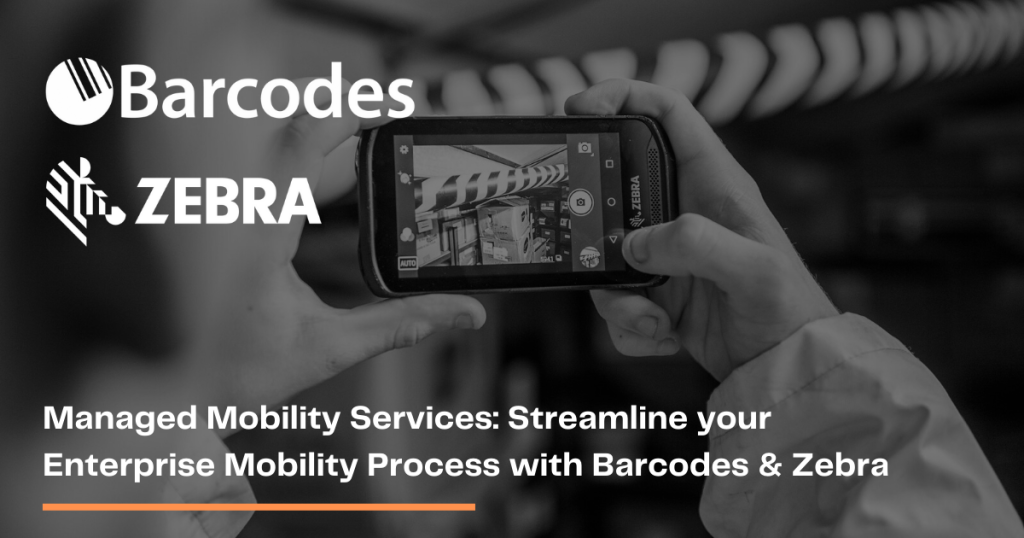
With enterprise mobility, large organizations face many challenges, ranging from managing a diverse workforce to supporting multiple locations and various devices.
Managed mobility services (MMS) from Barcodes, Inc. and Zebra Technologies do the heavy lifting of device procurement, management, security, reporting, and more for you.
Barcodes, Inc.’s managed mobility services can help you develop a smarter way to manage your devices. Barcodes can secure and manage the entire life cycle of your mobile devices, from device procurement to provisioning, maintenance, and end of life. Barcodes offers a wide selection of Zebra devices at stable, predictable costs to help unburden and empower your IT teams.
What is Managed Mobility Services?
Managed mobility services are critical in building and managing successful enterprise mobility. MMS helps companies manage the secure use of mobile devices, apps, and data across all their employees and third parties. Your organization’s mobile devices (such as the rugged Zebra MC3300 handheld series or the new Zebra FX series fixed RFID readers) are properly managed and secure.
With MMS, consolidate your mobile device management needs into one single, easy-to-use service without increasing costs.
Set up devices, install apps, secure data, and more—all while ensuring your employees have the tools they need to get their jobs done, no matter where they are.
How Barcodes, Inc.’s MMS Model Delivers, Every Time
Barcodes, Inc. is a trusted leader in mobility management, with world-class experience, knowledge, and complex mobility management skills you can depend on.  We will work with you and your team to deploy, secure, and manage your entire diverse mobile fleet to assure an optimized warehouse is the outcome.
Barcodes’ comprehensive MMS model features the solutions your mobility strategy needs, including:
- Device Evaluation & Procurement
- Provisioning & Deployment
- 24/7 Support & Helpdesk
- Technology Support Platform
- Reporting & Analytics
- MDM Design & Management
- Device Life Cycle Management
Get a Free Managed Mobility Services Assessment Today
If you’d like to learn more and are unsure where to start, the first step is to request a free assessment. One of our experts will learn more about your company and your unique needs.
Next, our team of specialists will thoroughly assess how Barcodes, Inc.’s managed mobility services can help meet the mobility needs of your enterprise.
Get started today by contacting a Barcodes Mobility Expert online or calling us at (855) 233-2917.
The Unitech PA760 Rugged Mobile Computer
With its robust data collection capabilities and adaptability, the Unitech PA760 Rugged Mobile Computer makes airlines, logistics, and manufacturing operations run better than ever before.
Dependable, Affordable Mobile Computers for High-Stress Environments
Unitech’s PA760 is designed for daily usage while also being powerful enough to tackle the most demanding workloads. The PA760 offers full customization and future-proofing, Android with GMS, an all-day battery, and fingerprint security.

Certain models of the PA760 are also health-care ready, allowing users to clean the casing with stronger chemical cleaning agents after each use.
Key Features of the Unitech MS838 Barcode Scanner
- Dependable efficiency at a more economical price point than other mobile computers
- Supports trigger mode and presentation mode
- Quickly reads barcodes
- Reads all 1D and 2D barcodes, both on paper and on screen
- Even helps decode broken or badly written barcodes
- Robust construction
Barcodes, Inc. has all the Unitech gear and accessories you need. After you’ve had a chance to review the PA760 spec sheet, we can help you incorporate Unitech mobile computers into your daily operations with minimal capital expense or internal IT resource drain. Contact us today to get started!
Honeywell CT30XP is a Modern, Customer-Centric Retail Mobility Solution
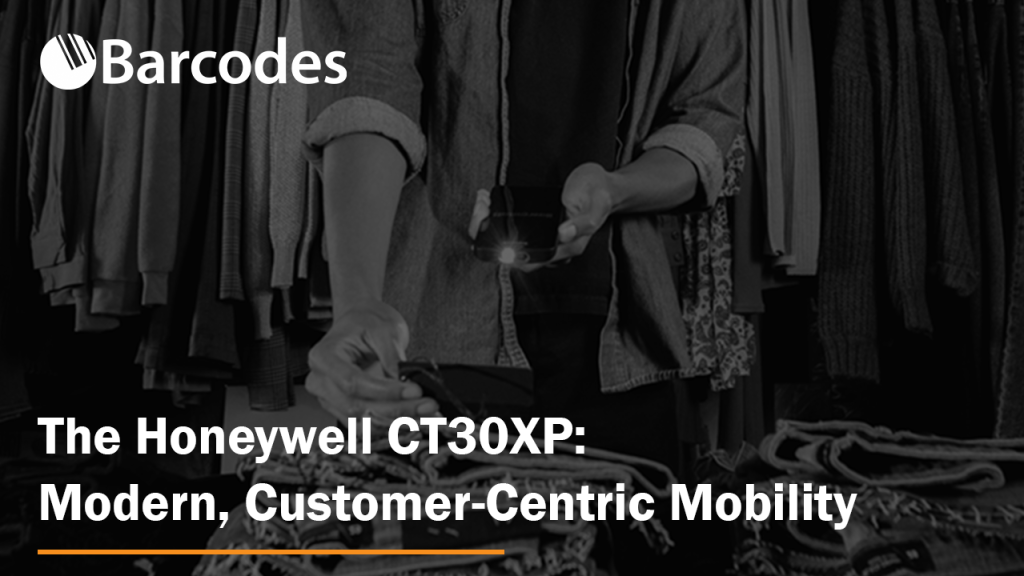
The Honeywell CT30XP is the ideal modern mobile computer for fast-paced retail environments.
Thin and light, but still tough—it can fit in your pocket like a cell phone. The CT30XP is designed for the people who will use it most: managers and associates in stores who need to deliver a modern, customer-centric shopping experience.
The CT30XP does it all:
- Data lookup
- Voice, text, and media communication via Smart Talk
- Task management
- Customer engagement
- Quick, easy code scanning
- Contactless payment
CT30XP Mobile Computers for Retail Applications

Honeywell’s CT30XP has been designed for ease of use and better customer service. Its elegant form factor is perfect for users familiar with mobile touchscreens, yet it’s built for the enterprise (complete with IT support, secure updates, maintenance, condition, location, use, and mobile device management through Mobility Edge and Op Intel from Honeywell). The radiant, 5.5″ high definition touchscreen display is a sight to behold.
Advanced Retail Scanning
Adaptive, feature-rich, and breakthrough performance with full Android 11 to 15 compatibility. The FlexRange scan engine provides accurate, fast long range scans when you need to wow a customer on the spot with a price or inventory lookup.
Wi-Fi 6
Better range and connection reliability – all while requiring less power consumption in stores where utilization and overhead reign supreme.
Universal, Purpose-Built Accessories
Including a universal dock charger family, IH40 RFID, belt clip, and hand strap.
All-Day Fast Charge
USB-C 3.0 charges up lightning quick, with a battery life of 8+ hours. In peak seasons, the battery swap comes in clutch.
See the CT30XP in Action
For detailed technical capabilities, download the Honeywell CT30 XP spec sheet here.
Customers Who Enjoy the In-Store Shopping Experience Return
Don’t delay. Your shoppers expect a modern, quick in-store experience. Looking up inventory, price comparisons, and finding the item they loved online are all made much easier with the Honeywell CT30XP.
Contact us today to take a look at a full-scale solution that will take your shopping experience to the next level.
RFID Webinar: Improve Returnable Container Tracking with RFID
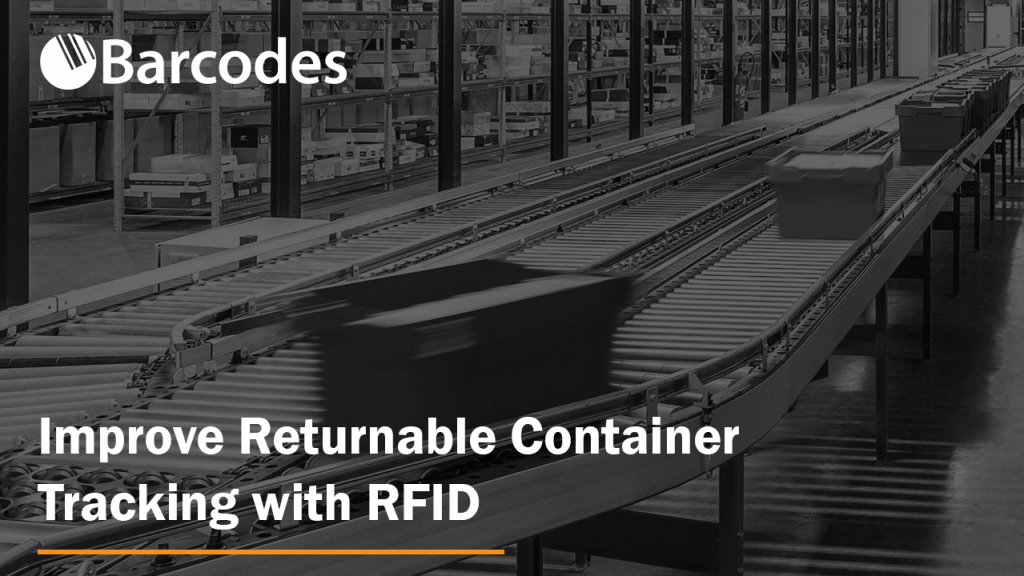
Webinar
Improve Returnable Container Tracking with RFID
Thursday April 20th 1:00-1:45pm Central
PRESENTED BY:
Christopher Vassilos – Senior Solutions Architect, Barcodes Group
Michael Daily – Senior Solutions Engineer, Impinj
RFID-Based Container Tracking
Upon delivery, it’s common for reusable containers to not be returned to the sender, with annual shrinkage rates often exceeding 10%. Keeping track of your Returnable Transport Items (RTIs) can be challenging, especially when logging their location depends on manual processes like scanning.
In this webinar, discover the benefits of RFID-based container tracking:
- Reduce the number of misplaced pallets, kegs, and boxes. Less new delivery assets need to be purchased, and shipments are not interrupted due to lack of totes.
- Track each asset as it leaves and returns to the warehouse, allowing you to determine its exact location immediately and whether they have yet to return.
- Calculate the flow of returnable assets to fully understand your shipping capacity for the present and future.
- Improve utilization of workers since it takes way less time to scan RFID tags than barcodes, due to its fully automatable reading without line-of-sight requirements.
Watch the Full RFID Webinar Recording
Why Barcodes Offers a TRUE Enterprise Mobility Management Solution
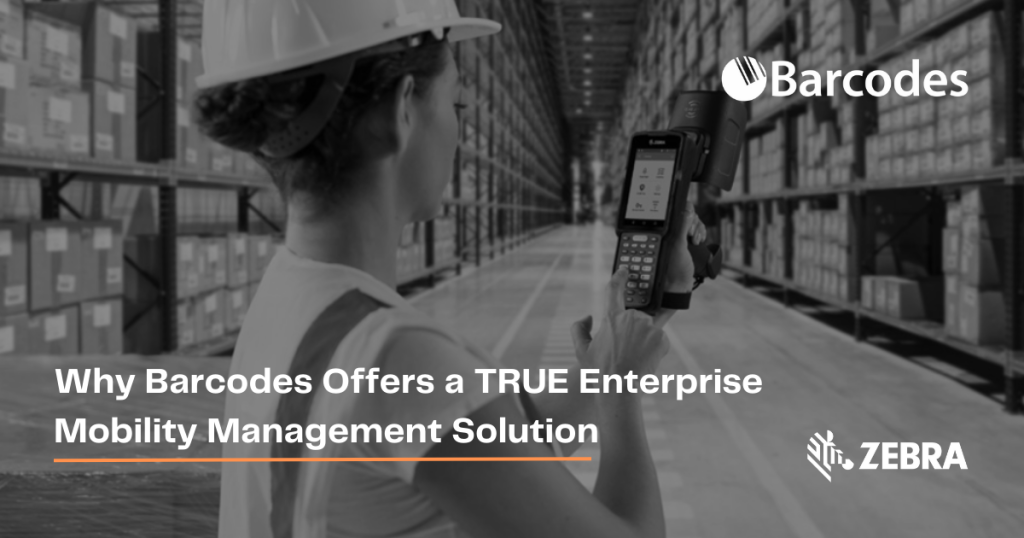
For many organizations, Enterprise Mobility Management is a standard set of solutions to deploy mobile devices and applications in the field. But true Enterprise Mobility Management goes beyond just deploying apps—it’s also about empowering your team with the tools they need to improve efficiency and productivity while making better decisions in the field.
What is a True Enterprise Mobility Management Solution?
True Enterprise Mobility Management is a comprehensive service from industry-leaders Barcodes & Zebra that provides an end-to-end mobility solution for your organization. The fully managed solution includes a broad spectrum of Enterprise Mobility Management services, including device procurement, device deployment, device management, device integration, app distribution, content management, remote security, and more. Barcodes can provide a solution that:
- Optimizes your devices
- Reduces IT spend
- Improves operational efficiency, and
- Increases your data security
Barcodes delivers this service as a single source provider, so you have one point of contact for all your mobile needs.
Quality You Can Trust
From the start, your project is managed by an industry veteran who ensures every Zebra device is staged, configured, and kitted to arrive ready to use exactly where you need them. This approach ensures consistent quality control across your devices, eliminating the need for internal support and allowing you to reallocate your valued in-house IT resources. Since you won’t have to manage devices or software updates or train staff on how to use mobile devices – your time will be free to focus on more critical tasks.
Support You Can Count On
Barcodes is different from other Enterprise Mobility Management providers. Our devices come pre-configured, fully integrated with Zebra technology, and ready to use immediately. Other providers waste valuable time for you & your staff because they require you to set up your own devices or hire someone else to do it for you. Barcodes also provide full in-house remote support. There’s no need to hire outside experts if you encounter a problem; we’re here for you 24/7!
Barcodes: The Industry Leader in Enterprise Mobility Management
Barcodes offers a true Enterprise Mobility Management solution you won’t find anywhere else. Learn more about how our true Mobility Management service with Zebra devices can make a difference for your business. Get started today by contacting a Barcodes Mobility Expert online or calling us at (855) 233-2917.
The Advantages of Warehouse Tablets via the Device as a Service Model

Warehouse operators know creating a connected workforce is the key to greater efficiency. Research for a Zebra Technologies 2024 Vision Study found that 77% of warehouse decision makers see equipping their teams with mobile devices as an onramp to automation.
Furthermore, 80% have planned investments in new tech to increase their competitiveness. However, at a time of economic uncertainty, making the best use of those investments counts. The Device as a Service model is a budget-friendly, future-proof way to equip a mobile workforce with warehouse tablets.Â
Warehouse Tablets Enable Organizations to Meet Today’s ChallengesÂ
Deploying warehouse tablets is the key to solving some of the industry’s biggest problems. It eliminates paper-based processes that add time to workflows and create human error opportunities. Additionally, warehouse tablets increase employee productivity, which is particularly important during the labor shortage. They also allow a warehouse team to update inventory data in real-time, providing management and customers with much-needed visibility for smart decision making.
To provide maximum value, however, warehouse tablets must be purpose-built. In addition to a rugged design for standing up to use in a harsh environment, warehouse tablets must be ergonomic. Employees need both hands to do their jobs safely and efficiently, so it’s often more practical and safer to mount tablets on forklifts or workstations on wheels or provide an easy way to carry them, such as wearing a holster.
Rugged tablets for the warehouse also include multiple connectivity options, including Bluetooth, 4G or 5G, and Wi-Fi 6. In addition, they include security features, such as multifactor authentication (MFA), to ensure that only authorized personnel can use them.
The evolution of warehouse tablets has also given administrators more effective ways to deploy and keep them operational. Services enable centralized management for fast configuration and provisioning and for providing insights into device health, security, and usage. With these solutions, warehouse operators always have the assurance that tablets are charged, in good operating condition, and secure.
The Device as a Service Model Breaks Down Barriers to Tech Upgrades
Although warehouse tablets have evolved into valuable tools for competitive businesses, making a capital expenditure (CAPEX) for new devices can put an upgrade out of reach for some companies. The Device as a Service model eliminates those barriers and makes new technology upgrades possible.
With the Device as a Service model, companies:
Replace a CAPEX with an OPEX
Instead of paying for devices outright, warehouses pay a monthly fee to use tablets. The provider bundles everything the warehouse needs, including hardware, software, and management tools, into one package for one cost. Replacing capital expenditures with an operating expense makes it more likely for CFOs to approve new devices more quickly.
Leave maintenance and service to the provider
The Device as a Service model includes solution service and support. As a result, the warehouse’s IT team isn’t burdened with deploying and maintaining new devices – and there aren’t any surprise costs for repairs that devices occasionally need due to everyday use. In addition, with the provider covering maintenance, repairs, and support, warehouses typically see a lower TCO when they choose a Device as a Service solution than when they purchase solutions outright and maintain them with in-house staff.
Aren’t locked into obsolete technology
The rate of technological advancements is accelerating, making an outright purchase riskier. The Device as a Service model allows businesses to upgrade after their contract term, often 36 months, so they always use the best tech available for their operations.
Can scale more easily
This model allows a warehouse to deploy the tablets it needs now and plan strategically to add more devices as demand increases. The Device as a Service provider can manage that plan economically and according to the company’s technology roadmap.
Will benefit from the provider’s lifecycle management services
An experienced provider will manage warehouse tablets from selection to decommissioning, safely removing data and handling recycling or disposal responsibly.
Barcodes, Inc. Makes Deploying Warehouse Tablets Easy
As an experienced Device as a Service provider, Barcodes, Inc. is ready to provide you with the hardware, software, and services you need for a hassle-free, affordable warehouse tablet deployment or upgrade.
For three decades, Barcodes, Inc. has leveraged its industry and technical expertise and relationships with top manufacturers to successfully provide warehouse tablet solutions, tailoring them to meet specific customers’ needs. We also offer unparalleled customer service, proactively monitoring Device as a Service deployment and ensuring they always operate in peak condition.
The Device as a Service model allows competitive warehouse operations to upgrade tablets for more efficient, productive operations. Contact us to see how this model can work for you.Â
Improve Returnable Container Tracking with RFID

Returnable Transfer Items (RTIs), or returnable containers are critical assets for almost all manufacturing and logistics organizations. RTIs transport stock and commodities from one site to another. However, keeping track of your RTIs is a different story. Well-known manufacturers and logistics expert still often rely on manual methods, such as traditional scanning, spreadsheet, or pen and paper.
This leads to a major issue: inventory shrinkage.

Mismanagement of returnable containers owing to theft, unrecorded damage, or simply the inability of consumers to return empty pallets, kegs, and boxes costs a fortune.
How are Your Returnable Transfer Items Being Tracked Currently?
Barcode labels used to tag the cargo of a container during shipment are often non-permanent. Traditional barcode scanners and labels identify the contents of the container, but seldom provide reverse logistics tracking for the containers themselves.
Using permanent barcode labels as the foundation for a container monitoring system is not feasible. I know that might be strange to hear from a company called Barcodes, Inc. But scanning labels at various stages of the supply chain sometimes necessitates extra human effort, which is even more difficult when empty containers pile up.
One solution is to establish a tracking system utilizing modern asset tracking technology.
Reducing Yearly Inventory Shrinkage with RFID
“15% of all pallets in circulation vanish” or “20% of all packaging/equipment is lost owing to consumers retaining them for their own use or third parties removing them for their own use.”
SLS RFID 2016 Study
Inventory shrinkage is a major issue in the management of returnable transfer items (RTIs), which include all types of shipping containers, packaging, pallets, kegs, and boxes.
Shrinkage due to theft, unreported damage, or just consumers failing to return empty containers is a serious concern in this field.
Estimated annual shrinkage rates are anywhere from 3 to 9%. If you’re constantly replacing lost or stolen RTIs, the impact on profitability is a huge problem.
For organizations to decrease RTI shrinkage, RFID is appealing due to completely automated scanning without line-of-sight, as well as mass tag reading. The key advantage of RFID-based container monitoring systems is an improvement in container return rates. New containers are purchased in smaller batches and less frequently.
What Data Can Be Tracked with RFID Tags?
Integrating the RFiD Discovery system with your ERP system enables company-wide visibility of your RTIs, ensuring that essential assets are accessible at the relevant locations to fulfill any transportation request.
Exactly what the RFID ultimately tracks depends on your unique tracking requirements. Here are some examples of the depth of data you can store in a small RFID tag:
- Container Name
- Size
- Location
- Weight
- Item Quantity
- Container Properties
User memory on tags stores data. The serial number field can be pre-programmed or user-assigned.
The air-interface protocol standards for passive HF and UHF tags, such as UHF EPC Gen 2, define basic functions like read-write and which memory banks or blocks can be written to. Reader manufacturers include these low-level commands with higher-level subroutines in their software development kits for application developers.
How to Use RFID to Tag RTIs
RFID labels are long-lasting and more durable than traditional labels. RFID tags attach exceptionally well to returnable cargo and resist machine washing operations as well as harsh elements for much longer.
Any RTI equipped with an RFID tag can be detected by a small number of strategically located readers. The location data is delivered back to the central RFID Discovery database, where it may be evaluated.
This database allows you to discover how many RTIs have been sent to a specific supplier or customer, so you know which trade partner to approach when requesting a return.
When shipping containers are in range of an RFID reader, the information on the tags can be automatically acquired using a wide variety of methods:
- Fixed reader installed at a warehouse entrance or loading dock
- A mobile reader installed on a forklift
- Handheld reader brought inside a business partner’s facility for rapid inventory
What are the Main Advantages of Using RFID for Returnable Asset Tracking?
There are several advantages of using RFID to track returnable assets.
1. Recoup Billions of Dollars in RTI-Related Losses
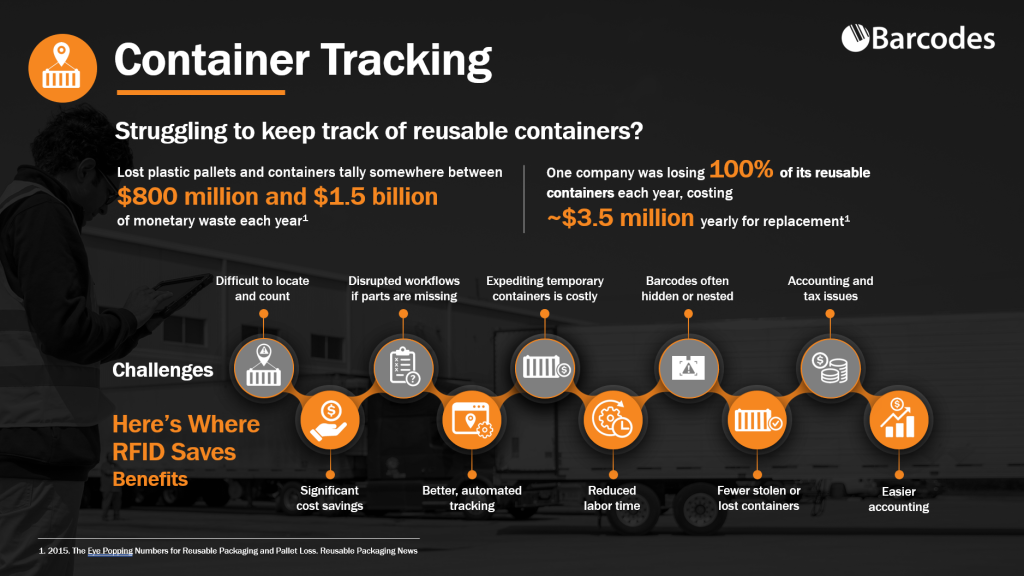
Reusable assets are returned to the sender after delivery, usually full of new goods and not empty. Entire industries are dedicated to capitalizing on reverse logistics and maximizing the value of containers.
So why do we pay far less attention to reusable assets compared to sold commodities and container space? In order to get a bird’s eye view of costly shrinkage areas, your immediate shipping capacity, and overall supply chain health, it’s critical to assess the flow of returnable assets as well.
If RTIs arrive in the incorrect place or are lost, the transfer of products becomes difficult or impossible, thereby causing delivery delays. And massive container replacement costs.
These misplaced assets represent billions of dollars in losses, since new delivery assets must be acquired. We will say again: RFID saves billions of dollars.
2. Track Every Asset Location With a Detailed Evidence Trail

While we like to imagine most people are honest and good by nature, the reality is that customers and suppliers are not going to eager to assist when the subject of locating your missing valuables is brought up. Tough luck.
Instead of playing the blame game, utilizing an RFID system to track each asset as it leaves and returns to the warehouse allows you to instantly establish its specific location, and whether it has yet to return.
This goes for both goods sold as well as the RTIs carrying them. Put another way, your returnables are much more likely to return.
3. Increase Visibility of Container Locations, Available Stock, and Overall Condition
Though shipping should be a precise science, we know that’s not always the case.

Businesses depend on RTIs everyday, but lack visibility over the availability, location, and quality of their RTIs.
When organizations incorporate careful pallet monitoring, tote box tracking, and stillage tracking, it’s much easier to manage a large pool of RTIs without bleeding money. Additionally, there is no longer a need to keep just-in-case containers on the sidelines, because of increased visibility into the “who, what, where, and how many?” questions.
4. Improve Labor Utilization at Every Level of the Supply Chain
Scanning RFID tags takes substantially less time than scanning barcodes. Similarly, RFID is a more appealing identifying solution for reusable assets since users do not need to manufacture new barcodes or print new labels.
Logistics and operational leaders can simply re-encode the same RFID tags again and again without increasing headcount or allocating redundant processes to busy workers.
Lastly, RTLS on RFID can significantly reduce the amount of time workers spend searching for specific inventory. In a field such as healthcare, nurses estimate they spend at least an hour per shift finding equipment. That really adds up when looking at overall labor utilization.
Evaluating and Deploying an Effective RTI Tracking System
Tracking RTIs with RFID helps prevent your assets getting lost or stolen, reduces disputes between trading partners, enables rapid inventory cycle counting, and quickly identifies shortages. Your organization could be saving billions of dollars.
Barcodes, Inc. is your trusted RFID partner and integrator. Contact us when you are ready to elevate your RTI management and discover the magic of RFID tracking. It’s easier to deploy with a partner you can trust.



